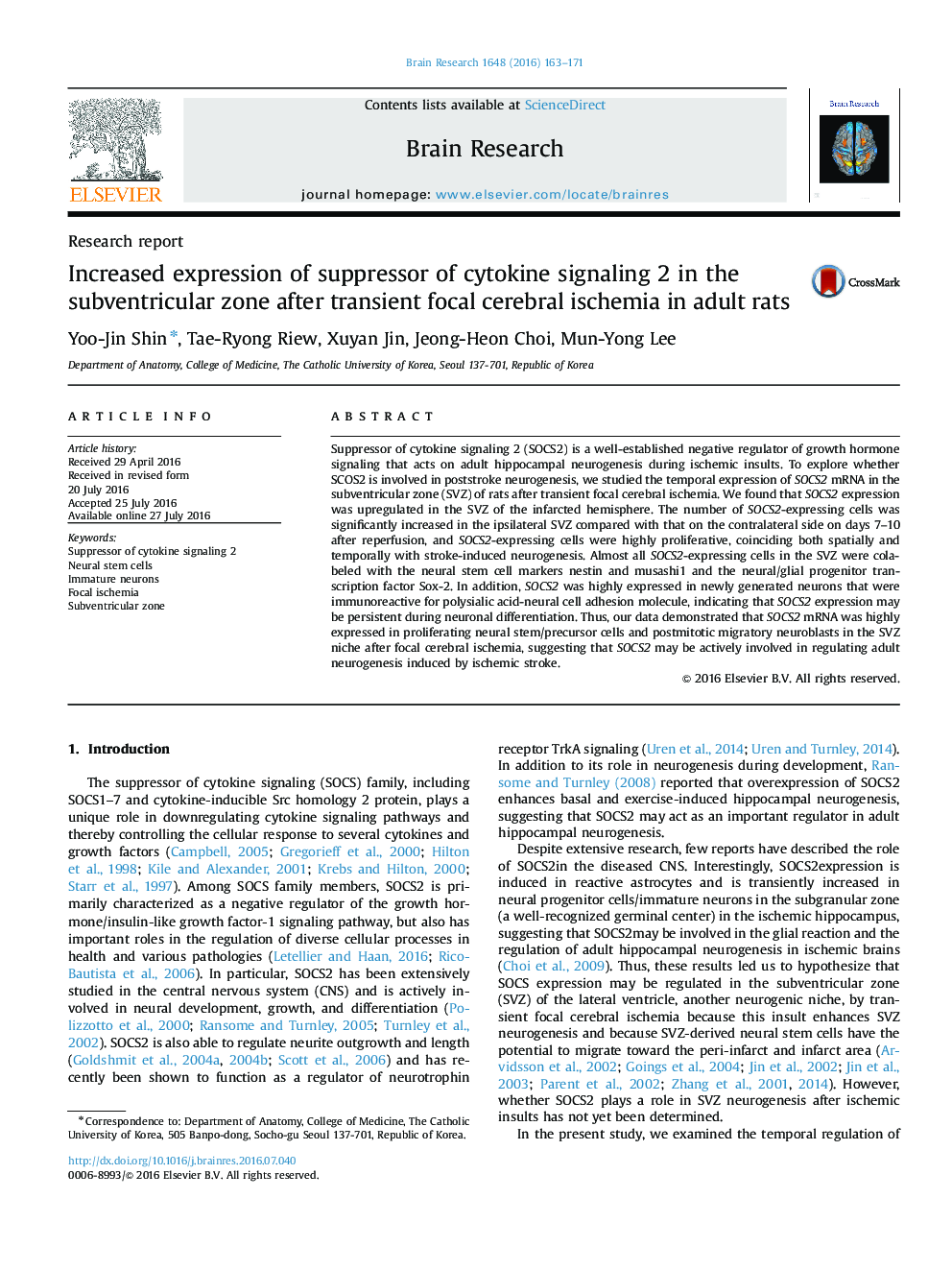| Article ID | Journal | Published Year | Pages | File Type |
|---|---|---|---|---|
| 6262349 | Brain Research | 2016 | 9 Pages |
â¢SOCS2 was expressed temporally in the SVZ after transient focal cerebral ischemia.â¢SOCS2 expression was higher in the ipsilateral SVZ than in the contralateral SVZ.â¢SOCS2 expression was associated with neural stem cell marker expression in the SVZ.â¢SOCS2 mRNA was highly expressed in postmitotic migratory neurons in the SVZ.
Suppressor of cytokine signaling 2 (SOCS2) is a well-established negative regulator of growth hormone signaling that acts on adult hippocampal neurogenesis during ischemic insults. To explore whether SCOS2 is involved in poststroke neurogenesis, we studied the temporal expression of SOCS2 mRNA in the subventricular zone (SVZ) of rats after transient focal cerebral ischemia. We found that SOCS2 expression was upregulated in the SVZ of the infarcted hemisphere. The number of SOCS2-expressing cells was significantly increased in the ipsilateral SVZ compared with that on the contralateral side on days 7-10 after reperfusion, and SOCS2-expressing cells were highly proliferative, coinciding both spatially and temporally with stroke-induced neurogenesis. Almost all SOCS2-expressing cells in the SVZ were colabeled with the neural stem cell markers nestin and musashi1 and the neural/glial progenitor transcription factor Sox-2. In addition, SOCS2 was highly expressed in newly generated neurons that were immunoreactive for polysialic acid-neural cell adhesion molecule, indicating that SOCS2 expression may be persistent during neuronal differentiation. Thus, our data demonstrated that SOCS2 mRNA was highly expressed in proliferating neural stem/precursor cells and postmitotic migratory neuroblasts in the SVZ niche after focal cerebral ischemia, suggesting that SOCS2 may be actively involved in regulating adult neurogenesis induced by ischemic stroke.
